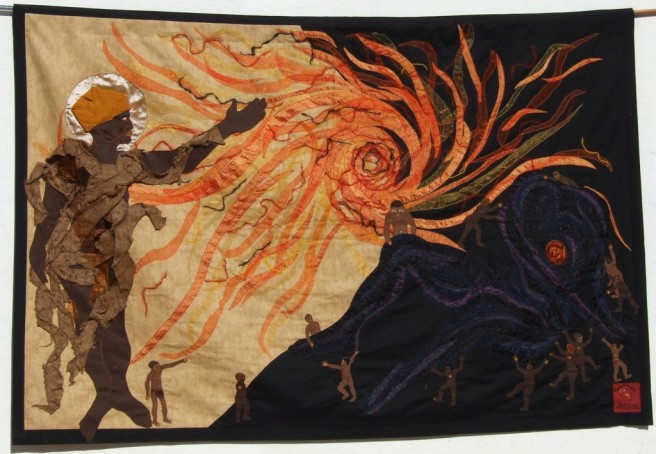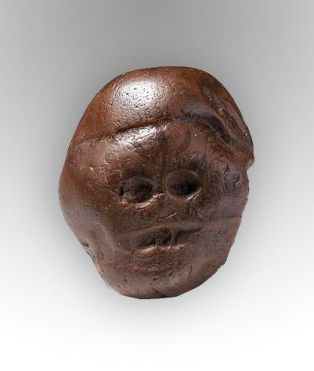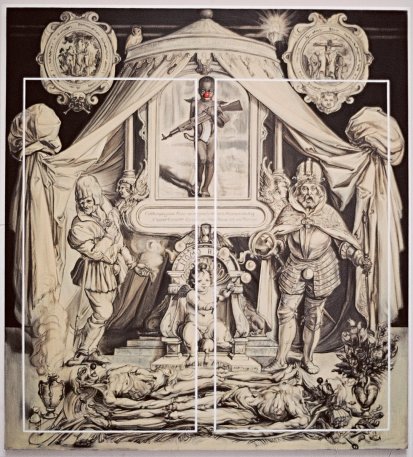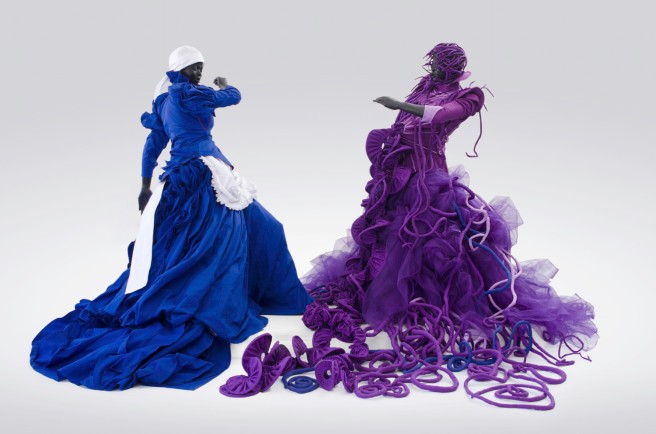The British Museum hosts an exhibition all dedicated to South Africa, exploring the art of this nation from 100,000 years ago to the present-day.
Even if you are not an amateur of African artworks, I really suggest you to visit this varied and thoughtful exhibition not only for its artistic relevance but especially for the historical, social and political issues raised from the collection.
Until 26 February 2017

The Creation of the Sun, 2015
When I go to visit an exhibition, I usually expect either to please my personal taste of art and beauty or to satisfy curiosity towards something that I don’t know very well. Though I have never been fascinated by the “tribal” art style of South Africa, I found the new collection hosted by the British Museum inspiring and particularly enriching. The well-designed and cosy rooms completely immersed me in a good reproduction of the long historical process that has shaped different artistic connotations within South Africa. As I am not an expert of the African culture, I could acquire accurate notions that I used to study at the high school, refreshing my memory on how the European Imperialism and the apartheid legislation influenced the national art production.
In a mixture of rock painting, wood engraving and sculpture, textile decoration, photography, and other incredible objects, the collection juxtaposes historic and contemporary artworks. Despite common beliefs, as the professor John Picton underlines in his review of the exhibition, South Africans have been producing art much longer than any other population around the world, going back to millions of years ago: the oldest exposed object is the three-million-year-old Makapansgat Pebble. From ancient times in fact, their traditional art has been developed through different aesthetic criteria.

The Makapansgat Pebble, Ca. 3,000,000 BP
Some figurative wood sculpture, backdated around 30,000 years ago, perfectly reflect the way South African artists gave meaningful association to the human body, highlighting for instance female breast to symbolize fertility and prosperity. They gave extreme importance to the body, even producing objects marked by bodily features. However, with the beginning of colonialism in the country by the Dutch in 1652 and later by the British during 1800s, many of these objects were destroyed as considered expression of “exoticism” by the new settled governments. In the late 1800s then, European references emerged in the art of this colony. In fact, as we can see within the exhibition showcases, to produce wood headrests, extremely meaningful for the combination of functional and spiritual values in the traditional South African artworks, sculptors incorporate European symbols such as their sophisticated weapons.
Emphasizing how African artists reacted against Western political control over the nation, the collection presents pieces of contemporary artists describing the impact of colonization. The canvas Pantomime Act Trilogy (1999) by Johannes Phokena, referring to the 1599 Allegory on the Equality of all Mankind in Death, portrays a crucified black child carrying a firearm with a red comic relief nose. This artist indeed is popular for his reworked operas from 1600s, aiming to represent the controversies of the European settlement. Another crucial event in history, artistically analyzed through the “South Africa: the art of a nation”, is Apartheid (1948-1991). A whole room is dedicated to the so-called “resistance art” gathering artists that attempted to challenge the brutality of racial segregation and discrimination. The 1975 A South African Colouring Book is a collection of prints of Gavin Jantjes that condemns the laws of apartheid by using the ironic concept of whites “colouring in” black people.

Pantomime Act Trilogy, Johannes Phoeka, 1999
Then moving to the last room, the exhibition concludes with the “period of transformations”, started from the dismantlement of apartheid in 1991, that celebrates the “unity of diversity” within South Africa. However, this social and cultural renaissance, still existing today, is not free from obstacles, but it has to face struggling issues like the diffusion of AIDS and the political contrasts. Art became then a significant expression of the “dark side” of changes, such as the diffusion of AIDS and the political contrasts. In her 2013 A Reversed Retrogress, the South African artist Mary Sibande reproduces two mannequins of herself, one wearing a Victorian dress and the other as a purple octopus. The first one represents the apartheid era in which her grandmother worked as a maid for a white family and the second one referring to the 1989 “purple rain protest” reflects the empowered black women. Raising questions about the future of her country, the artist contrasts a historical time that records repressive policy against black people, where the majority of black women were exploited as housemaids, with a new struggling period where they are empowered and called to fight for their nation.

A Reversed Retrogress, Mary Sibande, 2013
The new British Museum exhibition is a short journey through long historical steps that characterize the South African artistic culture. In no more than 30 minutes, visitors can enrich their knowledge on over 100,000 years of history, deeply immersed in a dynamic and diversified itinerary of art.
Should I go?
I suggest you to not lose this surprising experience, even if, as me, you are not usually attracted by the African art movements.
Rating: 7/10 (considering variety of exhibit objects; rooms design; accompanying historical information and contexts; crowding; price; enjoyment)
Cost: £12 or £9 if you are a student.

Very interesting and attention getting presentation of this exhibition, it give me reason to visit and make me curious about it. I’ll wish visit it during my next journey to London. Thanks
LikeLiked by 1 person
Hi Alessandro! Many thanks for your comment, happy to know that you appreciated my review and that it made you curious about the exhibition.
All the best!
Fiammetta
LikeLike
Very sorry for not being able to visit the exhibition. Your article described interesting things about African history and art.
LikeLiked by 1 person
Hi Giovanna! Thanks for your nice words about my article. Maybe you will have the chance to visit the exhibition as it lasts until the end of February!
My best to you,
Fiammetta
LikeLike
Very detailed info, really enjoyed it and definitely inspired to have a look at the show. Nicola
http://aroundbritainnoplane.blogspot.com and http://www.islingtonfacesblog.com
LikeLiked by 1 person
Dear Nicola, many thanks for your comment. Really happy to hear that you are now interested in visiting the exhibition.
All the best. Fiammetta
LikeLike
How did it go? I bet that was fun! I love museum! OMG! I would have loved it! Thank you for sharing!
LikeLiked by 1 person
Thanks for the kind comment! The gallery about South Africa at the British Museum was very interesting, you shouldn’t have missed it! I will keep you updated if there is a similar exhibition. Fiammetta
LikeLiked by 1 person